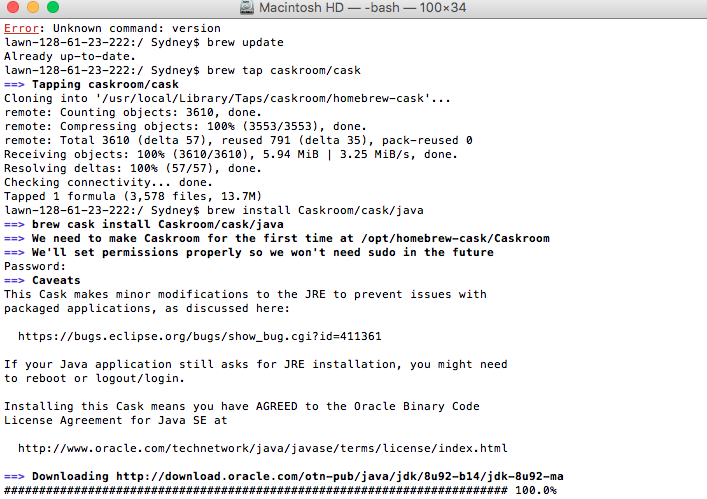
You will need Maven, a popular Java dependency manager, to start. In this how-to, you'll create a new Java project on Quarkus that exposes a REST API using dependency injection. Now you are ready to develop a cloud-native Java application with OpenJDK stack on macOS. OpenJDK 64-Bit Server VM (build 14.0.1+7, mixed mode, sharing) Write your first Java microservice on a Mac

You can learn more about configuring the $PATH variable in How to set your $PATH variable in Linux.įinally, verify your OpenJDK 14 installation: $ java -version zshrc depending on what shell you are running. Next, add Java to your PATH: $ export PATH=$PWD/jdk-14.0.1.jdk/Contents/Home/bin:$PATHĪlso, add this to the path to your dotfiles.

Move to the directory where you downloaded the binary file and extract it: $ tar -xf openjdk-14.0.1_osx-圆4_ I found a download link to the latest version on the OpenJDK homepage. If you are not a fan of package management and prefer managing Java yourself, there's always the option to download and install it manually. The output confirms OpenJDK 14 (the latest version, as of this writing) is installed. OpenJDK 64-Bit Server VM (build 14.0.1+7, mixed mode, sharing OpenJDK Runtime Environment (build 14.0.1+7) In just a few minutes, you will see: ? java was successfully installed!Ĭonfirm that OpenJDK installed correctly with $ java -version: $ java -version Once you have Homebrew on your Mac, use the brew command to install OpenJDK, which is the open source way to write Java applications: $ brew cask install java If you haven't installed it yet, Matthew Broberg's Introduction to Homebrew walks you through the steps. Homebrew is the de-facto standard package manager for macOS. (If you are running Linux, please see Seth Kenlon's article How to install Java on Linux.) Install OpenJDK from a Brew repository

So I will walk through installing and getting started with the Java development environment on macOS. This future for Java development starts with more people installing and using Java. Luckily, new Java frameworks (e.g., Quarkus, Micronaut, and Helidon) have recently broken through the challenges by offering smaller applications that compile faster and are designed with distributed systems in mind. Other languages filled in the space, particularly JavaScript, Python, and Go, with Rust and WebAssembly offering new alternatives.ĭespite this competition, cloud-native Java is making an impact on cloud-centric software development. Unfortunately, those efforts weren't good enough to make Java the preferred programming language for developers to implement cloud-native Java applications for serverless and event-driven platforms. With these technologies, the Java application stack has been optimized to run larger heaps and highly dynamic frameworks that can make decisions at runtime. Free online course: Developing cloud-native applications with microservices architectures.


 0 kommentar(er)
0 kommentar(er)
